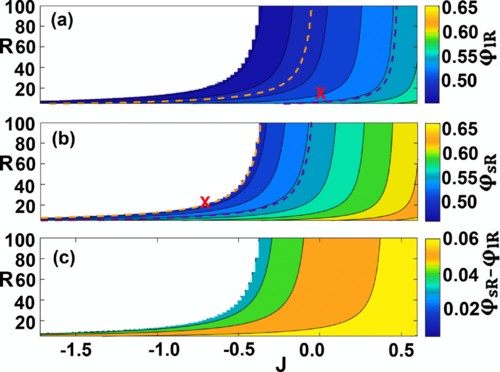Recent Publications
M. A. Lam, B. Khusid, L. Kondic, and W. V. Meyer,
Role of diffusion in crystallization of hard-sphere colloids,
Phys. Rev. E, 104, 054607, (2021)


Vital for a variety of industries, colloids also serve as an excellent model to probe phase transitions at the individual particle level. Despite extensive studies, origins of the glass transition in hard-sphere colloids discovered about 30 y ago remain elusive. Results of our numerical simulations and asymptotic analysis suggest that cessation of long-time particle diffusivity does not suppress crystallization of a metastable liquid-phase hard-sphere colloid. Once a crystallite forms, its growth is then controlled by the particle diffusion in the depletion zone surrounding the crystallite. Using simulations, we evaluate the solid-liquid interface mobility from data on colloidal crystallization in terrestrial and microgravity experiments and demonstrate that there is no drastic difference between the respective mobility values. The insight into the effect of vanishing particle mobility and particle sedimentation on crystallization of colloids will help engineer colloidal materials with controllable structure.